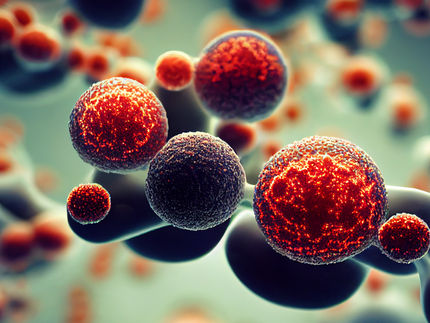Sweet news for stem cell's 'Holy Grail'
Scientists have used sugar-coated scaffolding to move a step closer to the routine use of stem cells in the clinic and unlock their huge potential to cure diseases from Alzheimer's to diabetes.
The problem facing scientists is how to encourage stem cells to turn into the particular type of cell required to treat a specific disease.
But researchers at the University of Manchester's School of Materials and Faculty of Life Sciences have developed a web-like scaffold, coated with long-sugar molecules, that enhances stem-cell cultures to do just this. The scaffold is formed by a process known as 'electrospinning', creating a mesh of fibres that mimic structures that occur naturally within the body.
The team's results – presented in the Journal of Biological Chemistry - are particularly promising, as the sugar molecules are presented on the surface of the fibres, retaining structural patterns important in their function. The sugars are also 'read' by the stem cells grown on the surface, stimulating and enhancing the formation of neuronal cell types.
Lead author Dr Catherine Merry, from Manchester's Stem Cell Glycobiology group, said: "These meshes have been modified with long, linear sugar molecules, which we have previously shown play a fundamental role in regulating the behaviour of stem cells. By combining the sugar molecules with the fibre web, we hoped to use both biochemical and structural signals to guide the behaviour of stem cells, in a similar way to that used naturally by the body. This is the Holy Grail of research into developing new therapeutics using stem cell technology."
The group anticipate that the combination of the sugar molecules with the fibre web will aid both the growth of stem cells and the formation of different cell types from the stem cell population.
Possible applications include tissue engineering, where the meshes could support cells differentiating to form bone, liver or blood vessels, for example. The meshes also have potential therapeutic implications in the treatment of diseases such as multiple osteochondroma (MO), a rare disease creating bony spurs or lumps caused by abnormal production of these sugar molecules.
Other news from the department science

Get the life science industry in your inbox
By submitting this form you agree that LUMITOS AG will send you the newsletter(s) selected above by email. Your data will not be passed on to third parties. Your data will be stored and processed in accordance with our data protection regulations. LUMITOS may contact you by email for the purpose of advertising or market and opinion surveys. You can revoke your consent at any time without giving reasons to LUMITOS AG, Ernst-Augustin-Str. 2, 12489 Berlin, Germany or by e-mail at revoke@lumitos.com with effect for the future. In addition, each email contains a link to unsubscribe from the corresponding newsletter.
















































